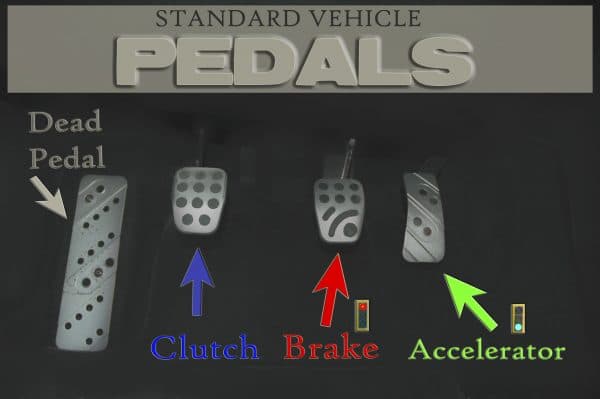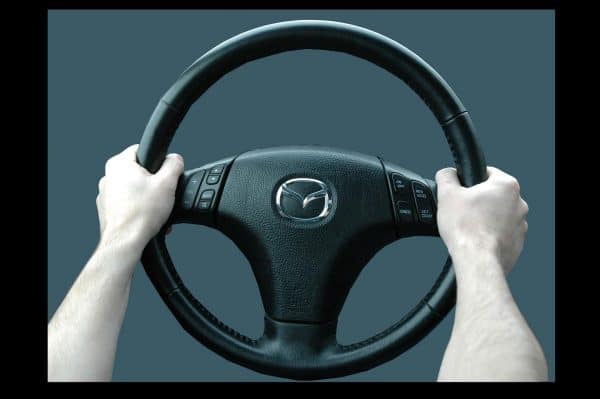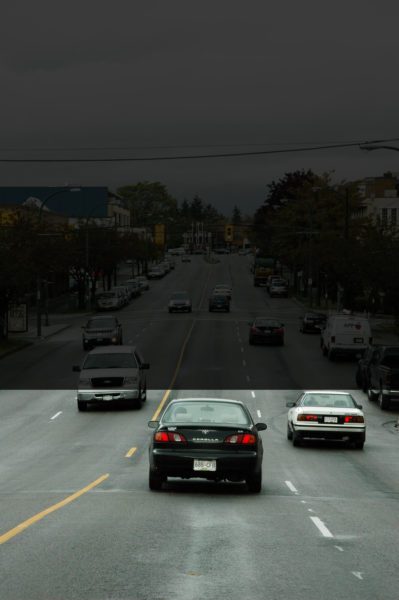Driving In A Straight Line
Question about driving in a straight line.
I’m a very new driver, just starting out (in my adult years). Very disconcerting is the fact that despite all my attempts to adjust the movement of the car by turning the wheel, the car still drifts from side to side.
My instructors from the school I’m registered in have been impatient with me over this from the very beginning, and I’ve become frustrated as well.
I’m in despair over my inability to keep the car in a straight line, and both instructors I’ve worked with have implied or directly stated that I shouldn’t be driving. I refuse to accept this as there must be some way I can solve this problem.
And while doing this I also have to observe what is close at hand, so that I get all flustered and start doing one thing after another that is wrong. I turn the wheel the way they tell me and they insist that I’m not doing it. No, I am not crazy, but I am in despair over this because I do want to learn. I would love to set up a dialogue with someone.
I watched YouTube videos over this problem, and they all advise one to keep looking as far forward as possible. If such is the case, why haven’t my instructors ever mentioned this to me or advised me to do this?
Please, let me hear from someone who is really knowledgeable on this particular subject, for I am really anxious to both learn and succeed in passing my road test and getting my license. Thank you.
How to Drive in a Straight Line? It’s a Good Question
Yes, cars that won’t go in a straight line is a real thing. Okay, I’m going to skip the wheel alignment jokes. Do not despair! This is quite a typical problem for new drivers. If you’ve never driven a vehicle in a straight line before in your life, then how would you know what to do? Sometimes things that seem like they should be easy actually aren’t. Do not worry about it.
Firstly good on you to decide to learn how to drive. I do think it is very strange your instructors didn’t mention to look far ahead. This is one of the most important, fundamental, and first skills you need for great driving.
Not all instructors are created equal. If you can, get another one until you feel you found one that is patient and knowledgeable. Ask them how much experience they have.
I must admit, when I was a new driving instructor, I was pretty terrible. It takes a lot of experience (years) to become a good driving instructor, too.
Is your main problem that the car won’t go in a straight line?
Driving In A Straight Line: Seat & Steering Wheel
Did you discuss your seating and steering wheel position with your instructors? That is so important for controlling the vehicle properly.
Driving In A Straight Line: Your Seat Position
If you are sitting in the drivers seat and put your right foot flat onto the floor beneath the brake pedal, you want your knee to still be slightly bent. This is to make sure you’ll be able to press the brake all the way when need be.
Dead Pedal
Dead Pedal foot position can help you to drive in a straight line


When driving, it’s recommended to put your left foot onto the “dead pedal” or if there isn’t one, where it would be. This helps brace you and helps control the vehicle smoothly.
Your Steering Wheel

You don’t want to be too close to the steering wheel either. If you grab the wheel at 9 and 3:00, you want your elbows to be slightly bent.
You want to try and relax when you’re driving. It’s difficult when you’re new, but try to tell your body to relax. If you are grabbing the steering wheel with a kind of a death grip then it’s probably not going to be very smooth. The steering wheel is just for steering, not for ‘hanging on for dear life’ (it happens) …
Where are you looking
Of course, look far ahead at where you want to go. This will aim the car. The car will tend to go where you look. If you look at a parked car, you’ll drive towards it.
So we don’t want to drive by avoidance… like ‘don’t hit that… don’t hit that …. don’t hit that …’ your car would zigzag. It’s better to look where you want to go and then go there.
Of course you need to keep your eyes moving and see other stuff as well. We don’t want you staring at the pavement in front of your front bumper … as many new drivers tend to do. (Well, you have to look at the ground when you’re hiking in the woods right, so it seems tempting to do it) driving is a little different, a skill that takes a lot of practice.
The pavement just sits there, it’s not going to jump up at you and hit you in the face. Of course it’s good to notice potholes and things you don’t want to drive on but generally we want to look far ahead, as far as you can possibly see.
If you look far far far ahead, you will still be able to see the stuff that is closer in front of you, right?
It’s good to know what’s going on up ahead as well (are there any issues or construction… etc) because you are probably going to be there soon, and it’s helpful if you see a problem, or closed road or something.
But this does aim your car and should help you go in a nice straight line.
Less of this…

More of this…

So in short, I would recommend these
- Adjust seat properly
- Adjust steering wheel properly
- Have a good firm but gentle and relaxed grip on the steering wheel (if that made any sense)
- Put left foot on the dead pedal while driving
- Try to relax your body
- Remember to breathe
- And then look far ahead
- Did I miss anything Paul ?
It takes a while to learn driving. Every time you go you will get a little more experience. It all adds up. You will get it.
Conclusion
Driving in a straight line isn’t always easy for a new driver. It’s often times a combination of things that contribute to the squiggliness. Seat position is important, and so is relaxing your muscles so that you can use them to control the car smoothly.
The other thing has to do with looking where you want to go and then going there. This is better than driving by avoidance, which usually will end up looking like a zig-zag pattern. If you’re having problems with this, just keep practicing. You will get it.
By the way, how are your turns? If you need help with correcting improper turns, such as wide turns, or cutting the corner, read this.
Read more:

A woman was driving across the white lines in a parking lot not bothering to use the lane that was…